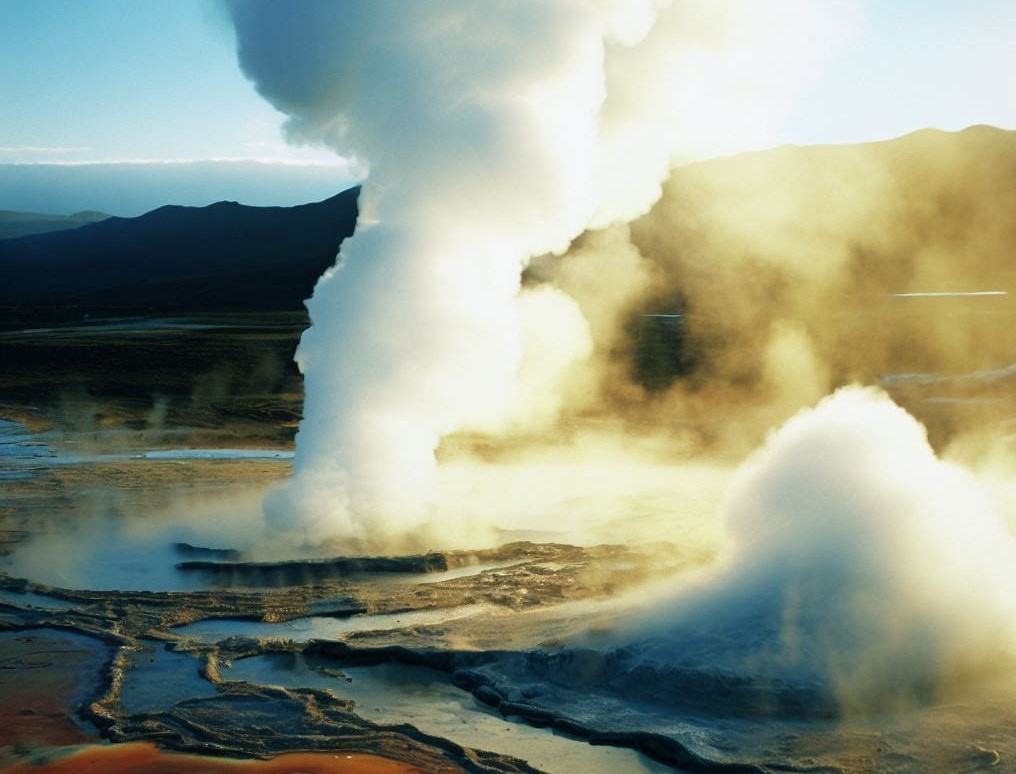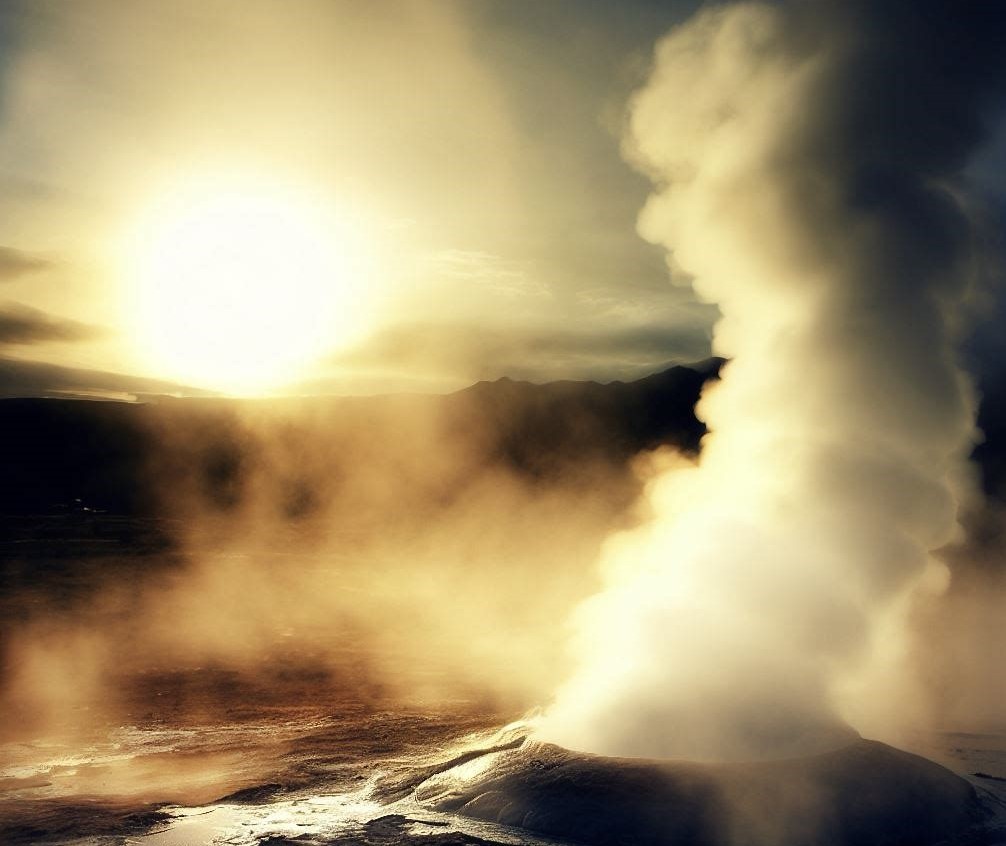Geothermal energy, derived from the Earth’s natural heat, has been utilized by human civilizations for millennia. The use of geothermal energy dates back to ancient times when people recognized the healing properties of hot springs and utilized them for bathing and medicinal purposes. Over the centuries, the harnessing of geothermal energy has evolved significantly, from simple thermal baths to sophisticated geothermal power plants that generate electricity.

Utilization of Geothermal Energy
The utilization of geothermal energy can be traced back to ancient civilizations that revered the Earth’s hot springs for their therapeutic benefits. Historical records indicate that the ancient Greeks, Romans, and Chinese were among the first to recognize the healing properties of geothermal waters and built bathing facilities around natural hot springs. These thermal baths served as places of relaxation, healing, and social gathering.
In the 1st century AD, the Romans built one of the most famous geothermal baths, the Baths of Caracalla in Rome. The complex utilized geothermal water to fill vast pools and provide heating for the facilities, showcasing an early example of the practical use of geothermal energy.
Throughout history, geothermal energy continued to be harnessed by various pre-industrial societies around the world. In the Americas, indigenous populations in regions with geothermal activity, such as the Andes and the western United States, used hot springs for medicinal and spiritual purposes. Native Americans in what is now the southwestern United States used hot springs for cooking, bathing, and healing.
In Iceland, a country rich in geothermal resources due to its volcanic activity, the Vikings utilized natural hot springs for bathing and heating their homes. The tradition of geothermal bathing, known as “hot pot” culture, remains a cherished part of Icelandic life to this day.
The advent of the Industrial Revolution in the 18th century brought significant advancements in technology and increased energy demand. During this time, there was growing interest in harnessing geothermal energy for industrial applications.
In 1807, François de Larderel, an Italian entrepreneur, established the world’s first geothermal district heating system in Larderello, Italy. He recognized the potential of geothermal steam for generating electricity and initiated the world’s first commercial geothermal power plant in 1904. Larderello became a pioneering geothermal energy hub, setting the stage for further developments in the field.
The 20th century saw significant progress in the development of modern geothermal power generation. Countries with significant geothermal resources, such as the United States, New Zealand, and the Philippines, emerged as leaders in geothermal energy development.
In 1960, the United States launched the first large-scale geothermal power plant at The Geysers, California. This marked a turning point in the history of geothermal energy, demonstrating its potential as a reliable and sustainable source of electricity.
Throughout the latter half of the 20th century and into the 21st century, geothermal power capacity continued to grow, with numerous countries exploring and investing in geothermal energy projects. Improved drilling technologies, enhanced reservoir management, and increased understanding of geothermal systems contributed to the expansion of geothermal power worldwide.
Geothermal Energy Development in the UK
The United Kingdom, unlike some geothermally active regions around the world, may not boast volcanic landscapes or high-temperature geothermal reservoirs. However, it does possess a valuable and promising resource – low-temperature geothermal energy – that has been tapped for various applications over the years.
In the early 20th century, as the world began to recognize the finite nature of traditional energy sources and the environmental impact of their exploitation, the UK embarked on a journey of deep geothermal exploration. This quest was driven by a growing desire to find alternative and sustainable sources of energy that could provide a reliable and environmentally friendly solution to meet the nation’s power needs.
Among the regions that captured the attention of geologists, engineers, and visionaries was Cornwall. Situated in the southwestern part of the UK, Cornwall offered tantalizing glimpses of geothermal potential. The region was historically known for its mineral resources and had long been a center for mining activities, but now it held the promise of hidden heat beneath its surface.
In 1981, the United Downs Deep Geothermal Power Project was launched in Cornwall, marking a pivotal moment in the history of geothermal energy in the UK. This ambitious project aimed to tap into the Earth’s natural heat reservoirs, harnessing the warmth stored within granite rocks deep beneath the surface to generate electricity. The United Downs project represented the first significant geothermal endeavor in the country, signaling the UK’s commitment to exploring and utilizing its geothermal potential.
Over the years, the project has continued to make strides forward, benefiting from advancements in drilling technology and innovative geothermal reservoir management techniques. Such progress has allowed scientists and engineers to delve deeper into the Earth’s crust, extracting the latent heat and transforming it into a valuable source of clean, renewable energy. As the United Downs project moves ahead, it serves as an important symbol of the UK’s renewed interest in geothermal energy and its place in the country’s broader energy transition strategy.
The resurgence of interest in geothermal energy in the UK is not isolated to the United Downs project alone. As part of the country’s larger efforts to diversify its energy mix and reduce its carbon footprint, geothermal energy has emerged as a compelling option. The realization that harnessing the Earth’s hidden heat can contribute significantly to the nation’s renewable energy goals has spurred various initiatives and explorations in geothermal hotspots across the UK.
The exploration of low-temperature geothermal resources has led to various direct use applications, further showcasing the versatility of this renewable energy source. In regions where low-temperature geothermal energy is accessible, district heating networks have been established, providing an eco-friendly and sustainable source of warmth for communities and industries alike. These district heating systems not only offer a reliable alternative to conventional fossil-fuel-based heating but also significantly contribute to reducing carbon emissions and combating climate change.
Geothermal energy’s potential in the UK is vast and varied. As the country embraces a more sustainable and environmentally responsible future, geothermal exploration and development will likely play a more significant role. With continued research, innovation, and support from both public and private sectors, the unlocking of the Earth’s hidden heat can become a transformative force in the nation’s energy landscape.
Current Status and Challenges
As of today, geothermal energy accounts for a relatively small portion of the world’s electricity generation. However, it remains a significant and growing renewable energy source in several countries. The International Renewable Energy Agency (IREA) estimates that global geothermal power capacity is expected to increase by 60% by 2030.
Despite its potential, geothermal energy faces challenges that have hindered its widespread adoption. One major obstacle is the high upfront costs associated with geothermal exploration and drilling. Initial investments in exploration wells and drilling can be substantial, making geothermal projects financially challenging, particularly in regions without well-established geothermal resources.
Moreover, geothermal resources are geographically constrained, and the best resources are often found in remote or environmentally sensitive areas. Extracting and utilizing geothermal energy requires careful environmental considerations and sustainable practices to avoid any adverse impacts on local ecosystems.

